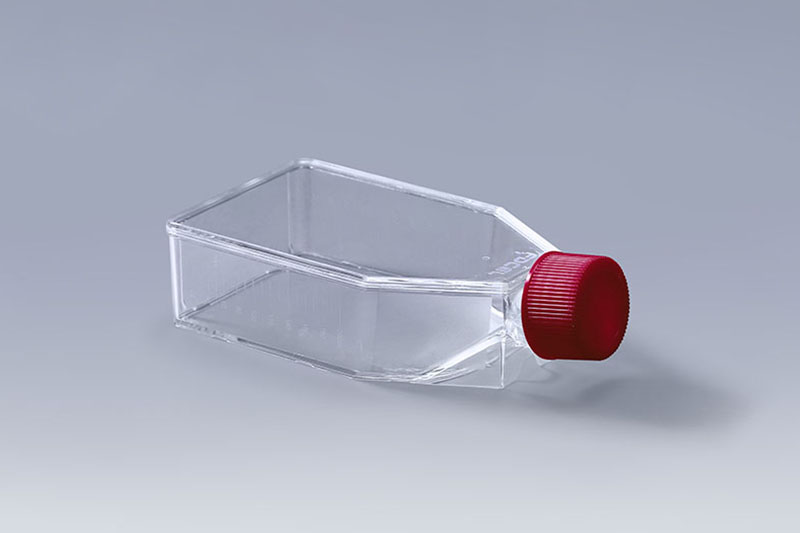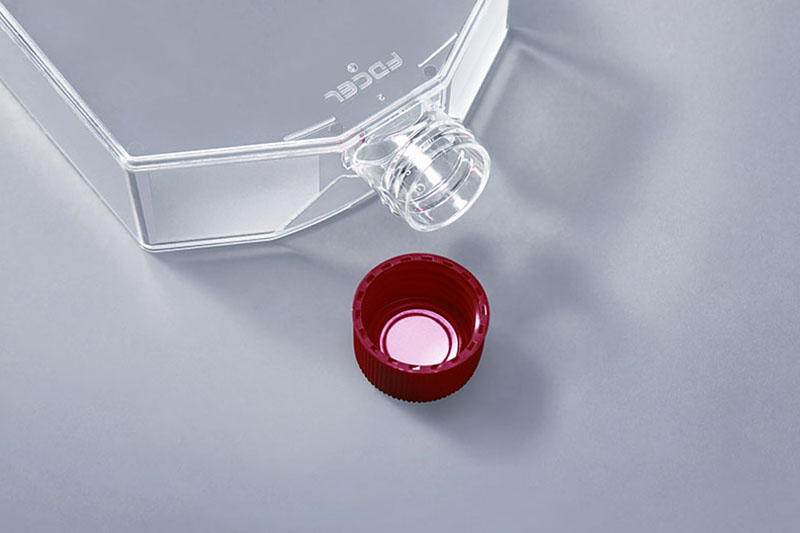Cell culture flasks are commonly used tools for adherent cell culture, and cell subculture operations are involved in culturing cells. How should we passage adherent cells? You can follow these steps:
1. Take out the preheated culture solution: take out the preheated culture solution, wipe it with an alcohol cotton ball before putting it into the ultra-clean bench.
2. Take out the cells from the incubator: Pay attention to tighten the bottle cap when taking out the cells from the cell culture bottle, wipe the microscope table with alcohol cotton balls, and then observe the cells under the microscope.
3. Put the culture bottle into the ultra-clean workbench and open the mouth of the bottle, and at the same time burn the mouth on the alcohol lamp for disinfection.
4. Add digestive solution: Carefully suck out the old culture solution, wash (rinse) with PBS, add appropriate amount of digestive solution (trypsin solution), pay attention to the amount of digestive solution to cover the cells, and the digestion temperature is 37°C.
T75-TC-Treated-Cell-Culture-Flasks
5. Observing the cells under a microscope: Observe the digested cells under an inverted microscope. If the cytoplasm is retracted and the cells are no longer connected into sheets, it indicates that the cells are properly digested at this time.
6. Discard the trypsin solution and add fresh culture medium to terminate the reaction. Carefully pipette into cell suspension.
7. Pipette the cell suspension into a 10 ml centrifuge tube. After equilibrating, place the centrifuge tube in a centrifuge and centrifuge at 1000 rpm/min for 5 min.
8. Discard the supernatant, add an appropriate volume of culture medium, and gently blow the cells with a dropper to make a cell suspension.
T225-TC-Treated-Cell-Culture-Flasks
9. Aspirate and distribute the cell suspension into 2 - 3 culture flasks, add appropriate amount of culture medium and tighten the caps.
10. Observing cells under a microscope: observe the amount of cells under an inverted microscope, and count if necessary. Note that too low a density will affect the growth of the passaged cells, and the density of the passaged cells should not be lower than 5×105/ml. Finally, make a mark.
11. Continue culturing: Wipe the culture bottle with an alcohol cotton ball, loosen the cap properly, and put it in a CO2 incubator to continue culturing. Cells began to attach to the flask wall 2 - 4 h after passage.
The cell passage in the cell culture flask involves the digestion of the cells. We should pay attention to controlling the digestion time to avoid damage to the cells due to excessive digestion.
The FAI climbed 5.9 percent year-on-year in the first 11 months of 2018, quickening from the 5.7-percent growth in Jan-Oct, the National Bureau of Statistics (NBS) said Friday in an online statement.
The key indicator of investment, dubbed a major growth driver, hit the bottom in August and has since started to rebound steadily.
In the face of emerging economic challenges home and abroad, China has stepped up efforts to stabilize investment, in particular rolling out measures to motivate private investors and channel funds into infrastructure.
Friday's data showed private investment, accounting for more than 60 percent of the total FAI, expanded by a brisk 8.7 percent.
NBS spokesperson Mao Shengyong said funds into weak economic links registered rapid increases as investment in environmental protection and agriculture jumped 42 percent and 12.5 percent respectively, much faster than the average.
In breakdown, investment in high-tech and equipment manufacturing remained vigorous with 16.1-percent and 11.6-percent increases respectively in the first 11 months. Infrastructure investment gained 3.7 percent, staying flat. Investment in property development rose 9.7 percent, also unchanged.
 English
English




















































